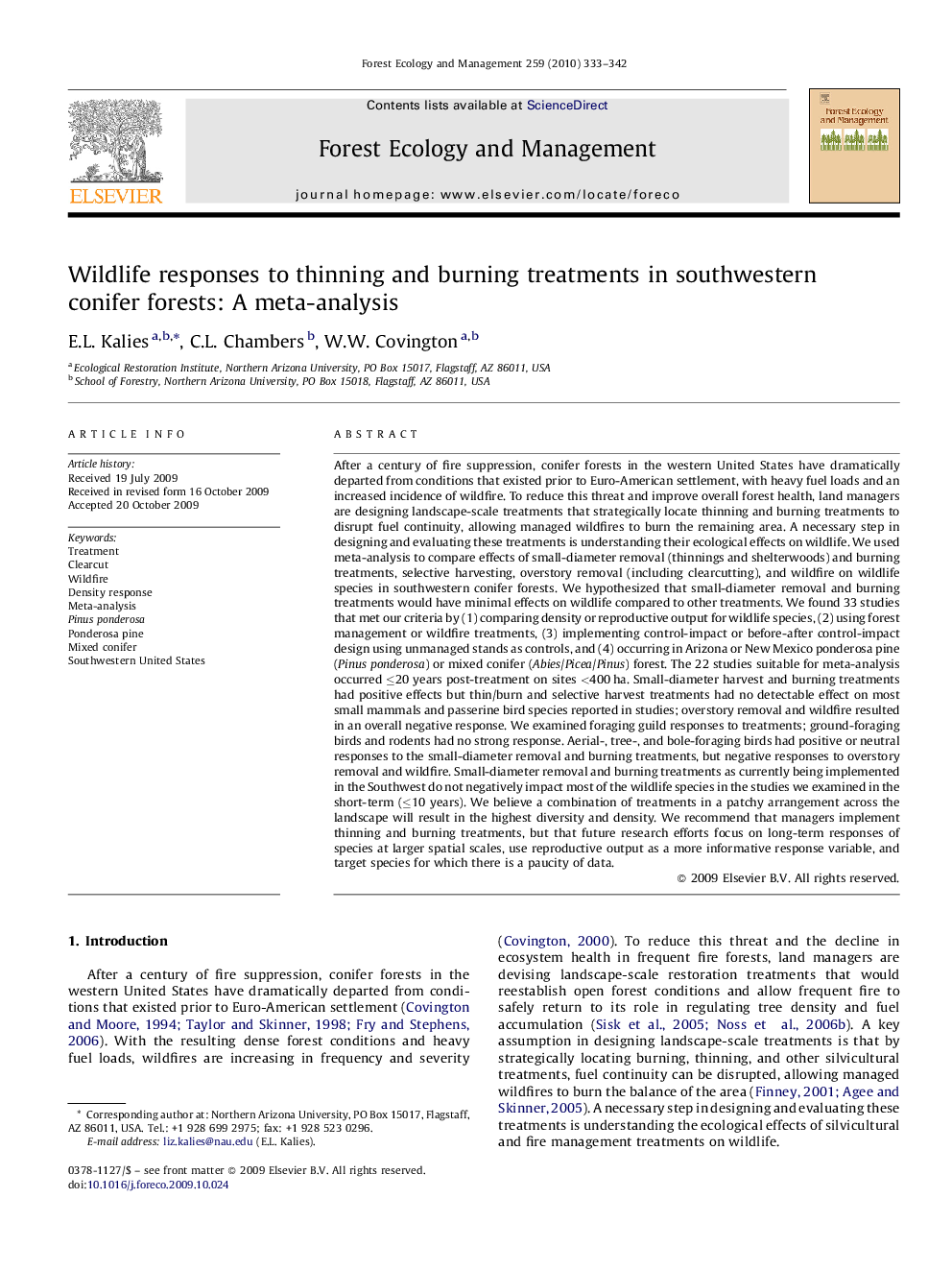| کد مقاله | کد نشریه | سال انتشار | مقاله انگلیسی | نسخه تمام متن |
|---|---|---|---|---|
| 10250559 | 159322 | 2010 | 10 صفحه PDF | دانلود رایگان |
عنوان انگلیسی مقاله ISI
Wildlife responses to thinning and burning treatments in southwestern conifer forests: A meta-analysis
دانلود مقاله + سفارش ترجمه
دانلود مقاله ISI انگلیسی
رایگان برای ایرانیان
کلمات کلیدی
موضوعات مرتبط
علوم زیستی و بیوفناوری
علوم کشاورزی و بیولوژیک
بوم شناسی، تکامل، رفتار و سامانه شناسی
پیش نمایش صفحه اول مقاله

چکیده انگلیسی
After a century of fire suppression, conifer forests in the western United States have dramatically departed from conditions that existed prior to Euro-American settlement, with heavy fuel loads and an increased incidence of wildfire. To reduce this threat and improve overall forest health, land managers are designing landscape-scale treatments that strategically locate thinning and burning treatments to disrupt fuel continuity, allowing managed wildfires to burn the remaining area. A necessary step in designing and evaluating these treatments is understanding their ecological effects on wildlife. We used meta-analysis to compare effects of small-diameter removal (thinnings and shelterwoods) and burning treatments, selective harvesting, overstory removal (including clearcutting), and wildfire on wildlife species in southwestern conifer forests. We hypothesized that small-diameter removal and burning treatments would have minimal effects on wildlife compared to other treatments. We found 33 studies that met our criteria by (1) comparing density or reproductive output for wildlife species, (2) using forest management or wildfire treatments, (3) implementing control-impact or before-after control-impact design using unmanaged stands as controls, and (4) occurring in Arizona or New Mexico ponderosa pine (Pinus ponderosa) or mixed conifer (Abies/Picea/Pinus) forest. The 22 studies suitable for meta-analysis occurred â¤20 years post-treatment on sites <400 ha. Small-diameter harvest and burning treatments had positive effects but thin/burn and selective harvest treatments had no detectable effect on most small mammals and passerine bird species reported in studies; overstory removal and wildfire resulted in an overall negative response. We examined foraging guild responses to treatments; ground-foraging birds and rodents had no strong response. Aerial-, tree-, and bole-foraging birds had positive or neutral responses to the small-diameter removal and burning treatments, but negative responses to overstory removal and wildfire. Small-diameter removal and burning treatments as currently being implemented in the Southwest do not negatively impact most of the wildlife species in the studies we examined in the short-term (â¤10 years). We believe a combination of treatments in a patchy arrangement across the landscape will result in the highest diversity and density. We recommend that managers implement thinning and burning treatments, but that future research efforts focus on long-term responses of species at larger spatial scales, use reproductive output as a more informative response variable, and target species for which there is a paucity of data.
ناشر
Database: Elsevier - ScienceDirect (ساینس دایرکت)
Journal: Forest Ecology and Management - Volume 259, Issue 3, 25 January 2010, Pages 333-342
Journal: Forest Ecology and Management - Volume 259, Issue 3, 25 January 2010, Pages 333-342
نویسندگان
E.L. Kalies, C.L. Chambers, W.W. Covington,